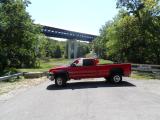- Replies 28
- Views 4.7k
- Created
- Last Reply
Top Posters In This Topic
-
 jones154 6 posts
jones154 6 posts -
 rancherman 5 posts
rancherman 5 posts -
 dripley 3 posts
dripley 3 posts -
 diesel4life 3 posts
diesel4life 3 posts


So I haven't driven my my pickup in a month and a half and it was gelled up when I parked it but I put a bunch of treatment in it before I parked it and ran it for a bit and then parked it... Yesterday I put a new fuel filter in bumped the key to cycle lift pump to fill the fuel filter housing... When I did this I heard the lift pump running but no fuel was being pumped it was about 20 degrees yesterday.... The pump is only like 2 years old...has anyone had the pump run but not move fuel before or do you think it might just be gel in the lines